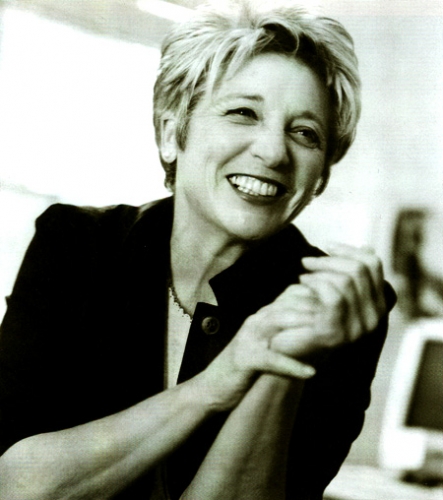
What motivated you to start Tricycle?
Until Tricycle, there was no independent voice of dharma. All the Buddhist magazines were community organs; they disseminated the teachings of a particular teacher or sect or lineage. So there was no forum for Buddhists of different traditions to speak to each other. And a few of us who had worked on community publications—in particular, Rick Fields—started talking about a nonsectarian, independent magazine.
It was conceived of as a Buddhist magazine for Buddhists?
It was always a twofold mission: to create an open forum for different kinds of Buddhists, and to create a conversation between Buddhists and non-Buddhists—and the timing seemed right for that.
What made the timing right?
His Holiness the Dalai Lama had recently received the Nobel Peace Prize. Interest in Buddhism had been growing steadily since the fifties, but the emergence of the Dalai Lama as a world spiritual leader gave Buddhism a new place on the Western map.
Where did the money come from?
I got a $5,000 loan from a friend and started working out of my home [in New York]. I was paying the rent and phone bills, and it grew slowly from there. Then Lex Hixon put up a substantial amount of money to hire Lorraine Kisly, a magazine consultant. That was about ten months before the first issue came out. And there is no way that this project could have gone forward without Lorraine, who became our first publisher. She pulled the whole thing together.
Why did you choose Spalding Gray to interview the Dalai Lama for the very first issue?
To signal that we were going to investigate classic and traditional and sacred material in a new way. And he, predictably, got an interview that no conventional choice would have produced. Same with the covers. Frank Olinsky’s cover designs were a clear statement that we were going to approach Buddhism from a new angle. That’s why so many of the covers use classic imagery—but shot from a quirky angle.
The magazine seems very much geared toward the Zen, Tibetan, and Vipassana traditions—not Pure Land or other forms of Buddhism practiced by Asian Americans. Why is that?
In the grossest of generalities, you have convert Buddhism, a movement that began in earnest in the sixties. Then you have communities of Buddhists of Japanese, Korean, and Chinese descent who have been in America for three, four, five generations and are now settled, largely middle-class, and well-educated.
After the new immigration law of 1965, you had a tremendous influx of immigrants from Cambodia, Laos, Thailand, Vietnam, most of whom are Buddhist. These communities are in many areas still struggling to get settled. The magazine reflects the current divide between these populations. Attempts are being made to build bridges but at this point, there’s not enough overlap to create one magazine that can be of service to all three groupings or that can be sustained by such a broad appeal.
Your own practice has always been in Zen, is that right?
My first teachers were Tibetan. And in 1981, I moved to the Zen Community of New York, which was Bernie Glassman’s community. I also began going to California to study with Maezumi Roshi.
Even within those Zen, Vipassana, and Vajrayana sects that attract Westerners new to Buddhism, there is quite a diversity of lineages, schools, and traditions. And there are some real points of conflict. Interpretation of the precepts differ, the role of the teacher differs, there are even differences of how to meditate. And some issues have generated conflict. What’s Tricycle‘s role in dealing with points of conflict between different traditions? Is it a reconciling role?
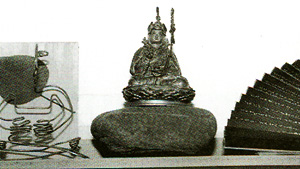
We have a responsibility to allow these issues to come forth. I also think that placing different views within one magazine functions as an optimistic reflection of what is possible in the world: that we can occupy the same space—the same cultural ground, say, and live together side by side, with our differing views and distinctions, but peaceably and respectfully. So it’s not about reconciling conflict as much as representing different views. Buddhism is relatively non-dogmatic. Yet this is the first time in history that all these different Buddhist traditions are literally in one place and rubbing up against each other, and that causes friction. But America has a pretty good track record of religious pluralism, and hopefully that will extend to many different kinds of Buddhism.
Tricycle has gotten itself into some very controversial situations, starting with the first issue. [The Dalai Lama was staying in a resort hotel in Santa Barbara, and Spalding Gray asked if he ever contemplated the young women in bikinis that were walking around the pool just below his room.] But people seem to not just get annoyed—they get angry. Why is that?
Well, magazine editors get letters from furious readers. In this case, though, I think there’s an anger that relates to our independence. Because it’s not affiliated with a specific teacher or tradition, to some extent, there’s a sense that it’s up for grabs. With the community-based Buddhist publications, you know the context, you know the agenda, you know the subtext and where the boundaries are. Because Tricycle is not affiliated, because there is no fixed position, there’s a tendency to think, “Well, if I was running this magazine…,” whereas a community magazine doesn’t evoke that.
Who decides what goes into the magazine?
I have the final say on what goes in. But Tricycle grew out of a loose confederation of friends in all different kinds of dharma communities. And this did foster a sense that it’s “our” magazine. The idea that it could be a common effort by people of different lineages was very appealing. The problem arises when something is published that people disagree with, or that they feel doesn’t reflect well on their own teacher or lineage. Then there is sometimes a sense of betrayal. I don’t think that’s too strong a word. And this “betrayal” accounts for the anger, I think.
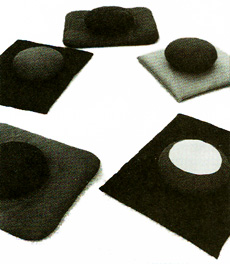
Has the magazine become a polarizing force?
To my mind, “lightning rod” is more accurate. The controversies have to do with articles or interviews or letters that address issues such as the role of democracy in Buddhism in this country, issues of authority, the role of the teacher. These are big issues, andTricycle may be the message bearer, but it is certainly not creating these issues. When dharma people like what’s happening with Buddhism in
America, we speak of adaptation and transmission and the felicitous meeting of East and West. Yet questions of authority, hierarchy, gender, democracy—these have been on a collision course with Asian dharma for the last thirty years. There’s nothing new here, and the progressive-conservative dance is as old as the hills. Nowadays, the progressives complain about material that seems stuck in the old ways, too attached to traditions that worked well in other cultures but may not be working here. The conservatives go on a rampage about material that they see as “too American.” Basically, that’s material that questions the traditional sources of authority.
And where is the magazine in all this?
For some traditionalists, just allowing these questions into the magazine is tantamount to a kind of blasphemy. I do not agree with that. The magazine has gone out of its way to represent, to the best of our capacities, differing views. That’s our job, as I understand it. And we are definitely committed to a free press. So Tricycle becomes part of the transmission process, working with a spiritual tradition that developed in patriarchal, hierarchical cultures that did not believe in or embrace open disclosures or public critiques, or did not question authority. So just allowing for these discussions, the commitment to an open forum, the refusal to censor the press because certain ideas do not conform to old Tibet or Theravada codes or Asian behavioral patterns, is itself part of an American agenda that, compared with Asia, is progressive. Yet still, there are many people who fault the magazine for being too weighted toward a conservative view. Articles that some people considered blasphemy, others saw as a timid approach that barely touched the surface of the issue.
My understanding is that fifty percent of your readers are not Buddhists, yet a lot of this sounds like it is of interest only to Buddhists with a capital “B.”
One piece at a time, most material is of interest to everyone. The debates and controversies that have sometimes surrounded material are confined to Buddhists. My view is that nothing is more important than the sections on practice, the excerpts that we publish from the old masters, Tibetans, Chinese, Japanese, and Burmese, material from the life of the Buddha. There’s a distinction to be made between material that inspires practice, that inspires awakening, and material that addresses the sociology of Buddhism in the West.
Why publish the sociology at all?
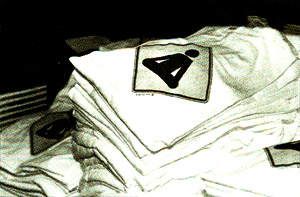
In the decade before Tricycle Started, there was a series of scandals in various Zen, Tibetan, and Theravada communities—money, sex, and power. But over and over the big issue became the “cover-up.” Not airing your dirty laundry in public is the manner of our Asian teachers. Yet keeping controversial issues hidden is considered dishonest in our society. So there was a real conflict of conditioning. The idea for Tricycle was that if we could accommodate the social issues in Buddhism—which are often muddy and uncomfortable and confusing and push our buttons—then traditional dharma material could be presented in a trustworthy context. Besides which, if a reader is only interested in the words of the Buddha, or Nargarjuna or Zen Master Dogen or Shantideva—all which is available in the magazine—then that person is already blessed with access to dharma. But a magazine can create different avenues of entry.
Does interviewing celebrities create a trustworthy context? Why interview Philip Glass or John Cage or Richard Gere?
“Celebrity Buddhism” generally assumes that the celebrity in question is just playing a role, not really doing it. But Gere’s been a serious and genuine practitioner for something like twenty-five years, and Phil’s been practicing for decades. And whatever anyone thinks about their art or their practice, these people are vehicles for the transmission of dharma. I understand Cage’s role to be enormous in this way.
Another issue here is the possibility that Tricycle is creating celebrities out of teachers, and that a lot of the interviews are with celebrity teachers, teachers with big book contracts who have become commodities. Certainly you have to sell this magazine. So how does that guide what you publish and your own role in the commodification of dharma?
I don’t know of any objective guidelines. I take it one page at a time. In terms of using famous names on the cover, et cetera, I’m comfortable with that. We’re trying to sell water by the river. How do we create the container? We try to make the cover very attractive and come up with cover copy that we think will entice people to open it up and buy it, because we feel that what we’re doing is of benefit to them.
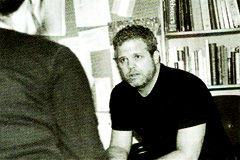
So you’re willing to compromise?
I’m willing to combine. What has always interested me the most about the magazine and makes it the most fun to edit is the mix. High, low, heavy, light. There’s no need for a magazine of just deep dharma. The magazine is a doorway, a stepping stone. So how low are you going to pitch it, how high? Everyone has their own line.
Have you ever felt that you violated your own line?
I’d say my line has shifted at times. The very first cover was so beautiful and so elegant. And then I discovered that we had to put a bar on the top: “Spalding Gray Interviews the Dalai Lama.” On the newsstands, that bar is all you have to sell the magazine. And I was just appalled. Aesthetically, I couldn’t stand it. But inside, in addition to the interview, was a wonderful piece on renunciation by Pema Chodron and a piece by Andrew Schelling that remains one of the best essays we’ve ever published, and we had excerpts from the Pali Canon—and so it was a compromise—if that’s what you want to call it—that I could live with. Very comfortably.
What are the lines that you draw for ads?
The view of the board of directors is that the advertising should be, like the editorial copy, focused on Buddhism and of service to the readership. And board members play a very hands-on role in ad policy. Not just no cigarettes and no alcohol, but no New Age paraphernalia, no crystals, no teachers from other traditions, no foods. From the view of a conventional magazine, when it comes to advertising, we are the purest of the pure. From another view, we’re in bed with secular, material capitalism. We are not ad-driven. We’re a subscription-driven magazine, supported by our readers. And we must raise several hundred thousand dollars every year in contributions to make up for the shortfall.
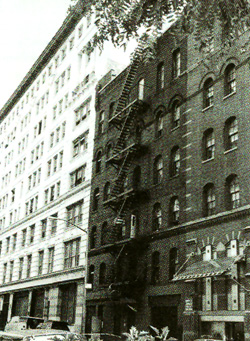
When it comes to the ads about Buddhism, we see that the commodification of dharma—the packaging of the dharma for sale in books, magazines, speaking engagements, et cetera—is clearly on the rise and raises many question. Why does Buddhism need to be sold and packaged at all? Most spiritual movements sell their teachings, although Alcoholics Anonymous, for example, avoids and commercialization whatsoever.
A.A. strikes me as a brilliantly conceived organization. However, many fundamental principles derive from addressing a situation that is socially stigmatized. The Buddha told his monks to go out and spread the good news: that mental anguish and dissatisfaction can be dissolved. Yet our materialistic society won’t support wandering, mendicant monks, so we create other ways to spread the news. What some people see as “packaging,” others see as “making accessible.” Why write a very introductory book that can reach a lot of people? For name and fame? Maybe. Surely dharma teachers get caught in that. But to completely dismiss the motivation to help others from among the dharma authors in the West—Asian and Western—is pretty cynical, I think. I don’t see the “sale of dharma” as a monolithic issue, all good or all bad. Buddhism asks that we look at intention.
On the back cover of a recent issue of Tricycle is a bookstore ad with a tag line reading, “Looking for a little wisdom to help you on your way?” Three of the advertised books are by the Dalai Lama. On each he is shown smiling. What’s the intention here? The Living Buddha as a smile button? Isn’t Buddhism about something more than a little wisdom and happy faces? What effect do you think this partial representation of Buddhism, for purposes of sale, has on the spread of dharma in America?
A smile button Buddha will attract a lot of people. And a few of them may go on to experience the Buddha in one of his more wrathful manifestations. Where one steps into the stream does not define where one will end up. The first wave of converts studied with Asian teachers who had long-term monastic training, and had held views that went completely beyond cultural and conventional realities. They presented a species of religion different from anything we had known. Then these teachers said: It is possible to know these levels of reality for yourself. No one said it was easy, no one said it was comfortable. This was not folk Buddhism. So now it’s thirty, sorry years later, and we have Western Buddhists who cut their dharma teeth on monastic-derived training and some of them are now teachers in their own right; some of them are being accused of commodifying the dharma by pitching it too low. Others are accused of being proprietary and of being elitist, of not wanting “their” Buddhism to be watered down for the masses. But Buddhism has always manifested as a popular religion, as a folk religion, and as a monastic tradition, a mystical tradition, a tradition with inner, outer, and secret teachings. Historically, one does not exclude the other. One of the distinguishing aspects of Buddhism in the West is that we have access to the historical perspective. We can look at it and learn from it. Or not.
Ten years you’ve been in operation. These are my Barbara Walters questions: What do you consider your finest achievement?
That we’re still alive. A not-for-profit independent Buddhist magazine. That’s a miracle.
What has been the most difficult aspect of your job?
Being a boss. Working in an office every day. I knew nothing of the built-in dynamics of running an office. And I was a slow learner.
What was the most problematic peice you ever published?
Probably the interview with June Campbell. She had just published a feminist critique of the Tibetan tulku system. She also revealed a sexual relationship that she had had with an eminent—and supposedly celibate—lama when she was very young and he was very old. And the lamas in this tradition were very offended. It is so unheard of in Asia for anything like this to be said in public—let alone by a woman!
Why don’t you do more investigative journalism, such as into alleged seual abuses by teachers?
The few stories that we have published that relate to a teacher’s sexual activities have two distinct aspects: One, the teacher is dead. Two, the material has appeared in print already; which means that the initial fury about a situation has passed and so maybe, now, we can learn something from whatever happened. I also think: that doing an expose with the assumption that the
outcome will be of benefit is naive. We’ve seen teachers who have had this kind of situation, and what tends to happen is that their students circle the wagons and the community becomes defensive and paranoid and more isolated from other groups—and that doesn’t serve them, or the collective dharma community, well.
How has Tricycle changed your own thinking about Buddhism in this country?
Ten years ago I had a lot of ideas about protecting the dharma. But it took a long time to accept how many of those ideas were about protecting myself, and protecting my identity as “a Buddhist.” You know, “I am a Buddhist and this is the best kind of Buddhist to be . . . ,” I see that all around me, and I recognize it in myself. Those attitudes still come up, and I can use them for personal investigation, but not as the basis for some self-aggrandizing pronouncement about how the dharma should be. Also, I have much more respect for the Western teachers than I did ten years ago. I really respect what they are trying to do. I don’t know that it adds up to the deepest dharma in the world. It’s going to take a long time before the dharma matures in the West. But my job allows me to see more about what the Western teachers are up against, and in many cases, to see how sincerely they are working in what is essentially a wasteland. Ten years ago, I was more inclined to sit back and judge them—and in comparison with Asian teachers, to judge harshly. Now I’m more appreciative of what they have undertaken. Practicing the dharma is so difficult, and everyone is trying so hard.
Thank you for subscribing to Tricycle! As a nonprofit, we depend on readers like you to keep Buddhist teachings and practices widely available.